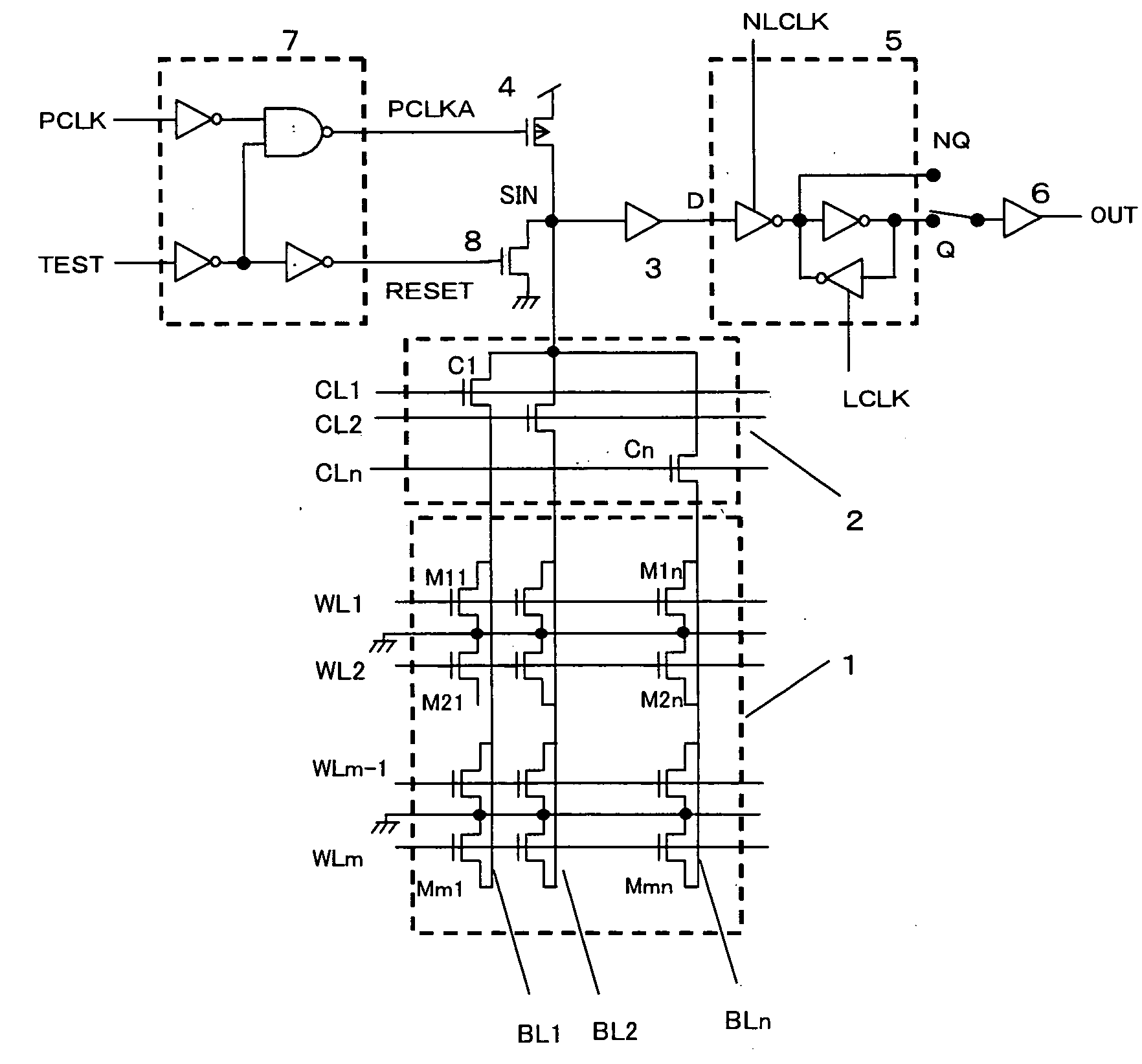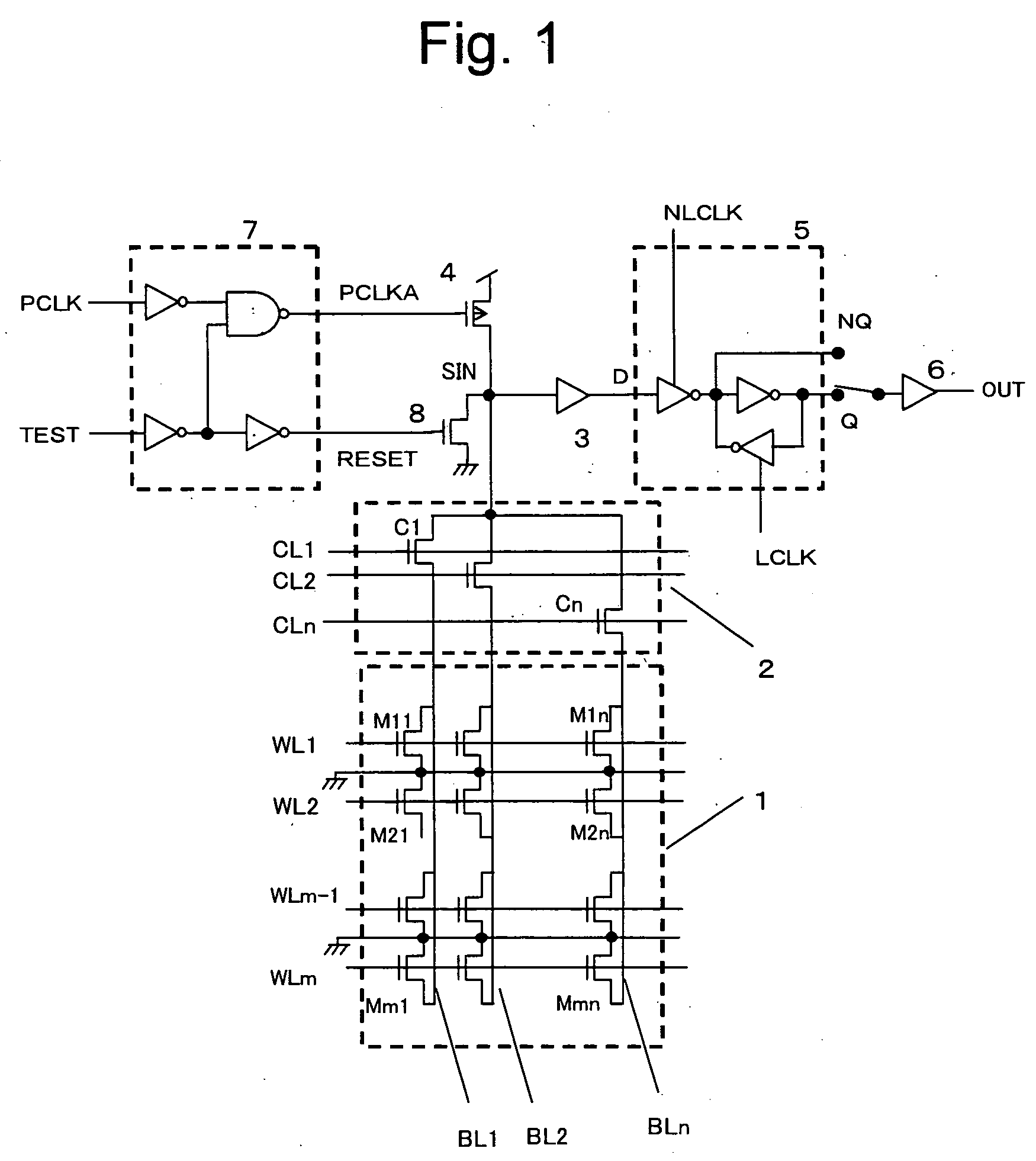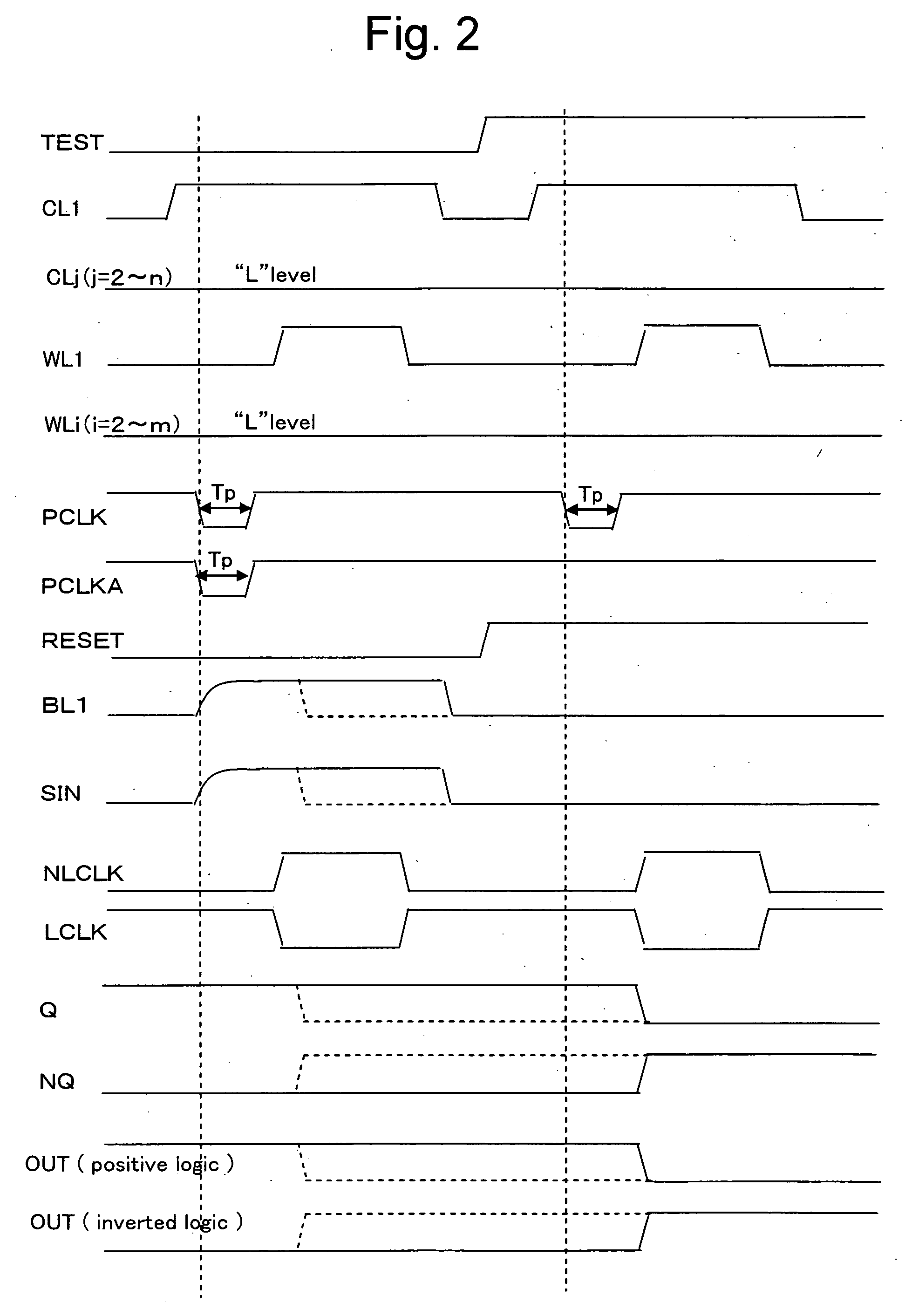Semiconductor device
a technology of semiconductor devices and semiconductors, applied in semiconductor devices, digital storage, instruments, etc., can solve the problems of poor connection, easy problem, and need for control circuits to be added, so as to prevent the yield from decreasing and reduce the number of connections
- Summary
- Abstract
- Description
- Claims
- Application Information
AI Technical Summary
Benefits of technology
Problems solved by technology
Method used
Image
Examples
first embodiment
[0067]FIG. 1 is a circuit diagram showing the configuration of a semiconductor device, that is to say, a mask ROM, according to the first embodiment of the present invention.
[0068] The semiconductor device of this embodiment is, as shown in FIG. 1, formed of a memory cell array 1, a column decoder 2, a sense amplifier 3, a transistor for charging 4, a latch circuit 5, an output buffer circuit 6, a charge signal control circuit 7 and a transistor for discharging 8. Memory cell array 1, column decoder 2, sense amplifier 3, transistor for charging 4 and output buffer circuit 6 are the same as those in the prior art, and therefore, the same symbols are attached to the same components, and the descriptions thereof are omitted.
[0069] Latch circuit 5, of which the input terminal is connected to the output of sense amplifier 3, outputs a signal in the same logic as that of an input D to an output terminal Q, and outputs a signal in the negative logic to an output terminal NQ when a latch ...
second embodiment
[0083]FIG. 3 is a circuit diagram showing the configuration of a semiconductor device, that is to say, a mask ROM, according to the second embodiment of the present invention.
[0084] The semiconductor device of this embodiment is, as shown in FIG. 3, formed of a memory cell array 1, a column decoder 2, a sense amplifier 3, a transistor for charging 4, a latch circuit 5, an output buffer circuit 6 and a column signal control circuit 9. Memory cell array 1, column decoder 2, sense amplifier 3, transistor for charging 4, latch circuit 5 and output buffer circuit 6 are the same as those in the prior art and in the first embodiment, and therefore, the same symbols are attached to the same components, and descriptions thereof are omitted. In addition, the semiconductor device of the present embodiment is also provided with a test terminal (not shown) into which a test control signal TEST is inputted from the outside.
[0085] Column signal control circuit 9, into which column selection sign...
third embodiment
[0094]FIG. 5 is a circuit diagram showing the configuration of a semiconductor device, that is to say, a mask ROM, according to the third embodiment of the present invention.
[0095] The semiconductor device of this embodiment is, as shown in FIG. 5, formed of a memory cell array 1, a column decoder 2, a sense amplifier 3, a transistor for charging 4, a latch circuit 5, an output buffer circuit 6 and a word line control circuit 10. Memory cell array 1, column decoder 2, sense amplifier 3, transistor for charging 4, latch circuit 5 and output buffer circuit 6 are the same as those in the prior art and in the first embodiment, and therefore, the same symbols are attached to the same components, and descriptions thereof are omitted. In addition, the semiconductor device of the present embodiment is also provided with a test terminal (not shown) into which a test control signal TEST is inputted from the outside.
[0096] Word line control circuit 10, into which word line selection signals ...
PUM
 Login to View More
Login to View More Abstract
Description
Claims
Application Information
 Login to View More
Login to View More - R&D
- Intellectual Property
- Life Sciences
- Materials
- Tech Scout
- Unparalleled Data Quality
- Higher Quality Content
- 60% Fewer Hallucinations
Browse by: Latest US Patents, China's latest patents, Technical Efficacy Thesaurus, Application Domain, Technology Topic, Popular Technical Reports.
© 2025 PatSnap. All rights reserved.Legal|Privacy policy|Modern Slavery Act Transparency Statement|Sitemap|About US| Contact US: help@patsnap.com



